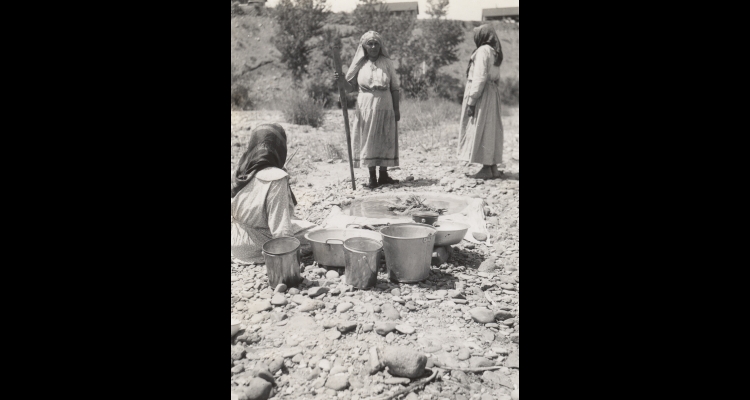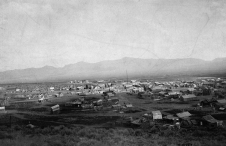Folklife of Tribal Groups
The four tribes native to the state of Nevada are the Washoe, the Western Shoshone, the Northern Paiute and the Southern Paiute. In adapting to the extremes of the high desert environment, all of these peoples have developed similar ways of life and cultural forms over the thousands of years they have occupied the Great Basin. Today many of their survival skills, such as hunting, gathering pine nuts or making willow baskets are no longer strictly necessary, but they carry immense cultural significance and so are passed on as a way of maintaining Native American identity.
Great Basin Indian culture is still very connected to the land and animals of the natural environment. For instance, basket makers will ask permission from and give thanks to the willows and other plants they gather, and only take what they need for their own use. Hunters do the same for the animals they kill and pine nut gatherers for the food they take. A few people still understand the medicinal and spiritual uses of plants, but this knowledge is rapidly being lost.
For Native Americans, stories root people in place. There are many legends about particular places, rock formations, bodies of water, plants, animals and other elements of the natural world. Most of them serve to explain why a place looks like it does or how an animal developed a characteristic behavior or appearance. There is a rock formation on the eastern shore of Pyramid Lake, for example, that is known to the Northern Paiute as the stone mother, and they have a story of how the tears she cried over the loss of her children created the lake.
The original music of the desert tribes was vocal, and as with stories the songs were about the natural world. The only instruments were sticks that were used to keep rhythm, although, later, hand drums were made of hides stretched over round hoops of wood and were used to accompany songs. These traditions of unaccompanied singing and hand drum singing are still practiced, although not by many. Dances were usually simple round dances and were often named after animals, like the Rabbit Dance.
Pow wows are a fairly recent addition to Great Basin Indian culture, having spread from the Plains tribes into other areas of the country. These pan-Indian gatherings and celebrations include drum music and dancing, dance competitions, hand games, traditional crafts and foods, and socialization with family and friends.
The best-known craft of the Great Basin tribes is willow basketry, which has undergone a renaissance in the last twenty years or so. Younger people are learning the skills of basketry, and the Great Basin Native Basketweavers Association, which was formed in 1999, has regular "weave-ins" around the state as well as an annual gathering. Willow sticks and split willow fibers, coiled or twined, are the foundation for all Great Basin basketry. Fibers of redbud, bracken fern root and devil's claw are added for color and design. Willow is used for cradleboards (called baby baskets), winnowing trays, cone-shaped burden baskets and decorative round baskets, among other things. Items made from brain-tanned buckskin, sometimes also smoked for a golden color, are another traditional craft of the region. Buckskin is still used for clothing, moccasins, gloves and cradleboard covers, but tanning is a long, messy process, so few people undertake it.
Traditional foods of the Great Basin tribes include deer, rabbit and other small animals, and fish for those living near water; many kinds of berries, roots and seeds; and pine nuts, which were used for pine nut soup, a staple food. The Washoe people also traded with California tribes for acorns, with which they made soup and biscuits. Local tribal groups, in fact, were often known by the type of food they ate. Today pine nut gathering remains an important fall activity, and often families will set up pine nut camps in the mountains, where their forbears have gone for generations.





